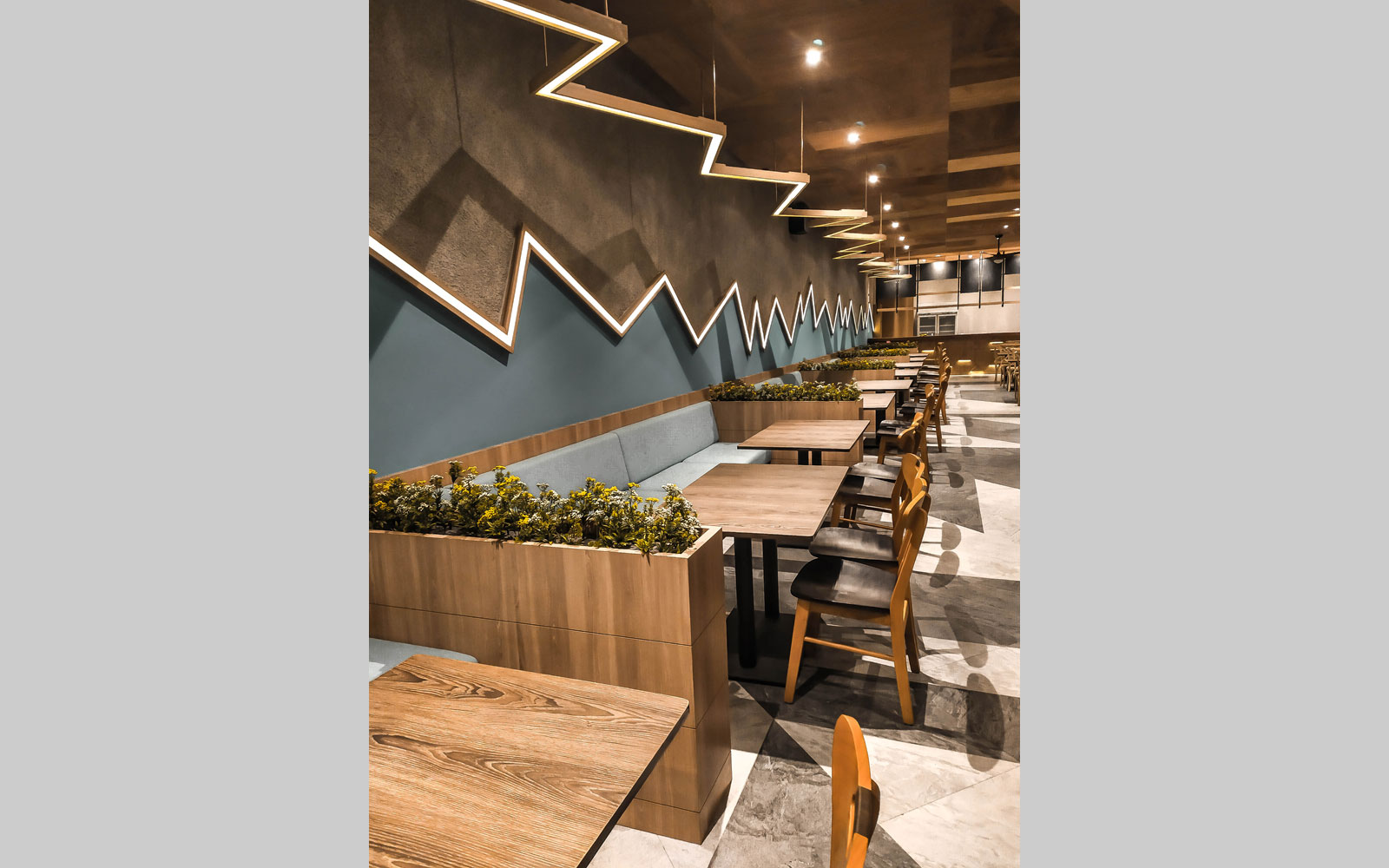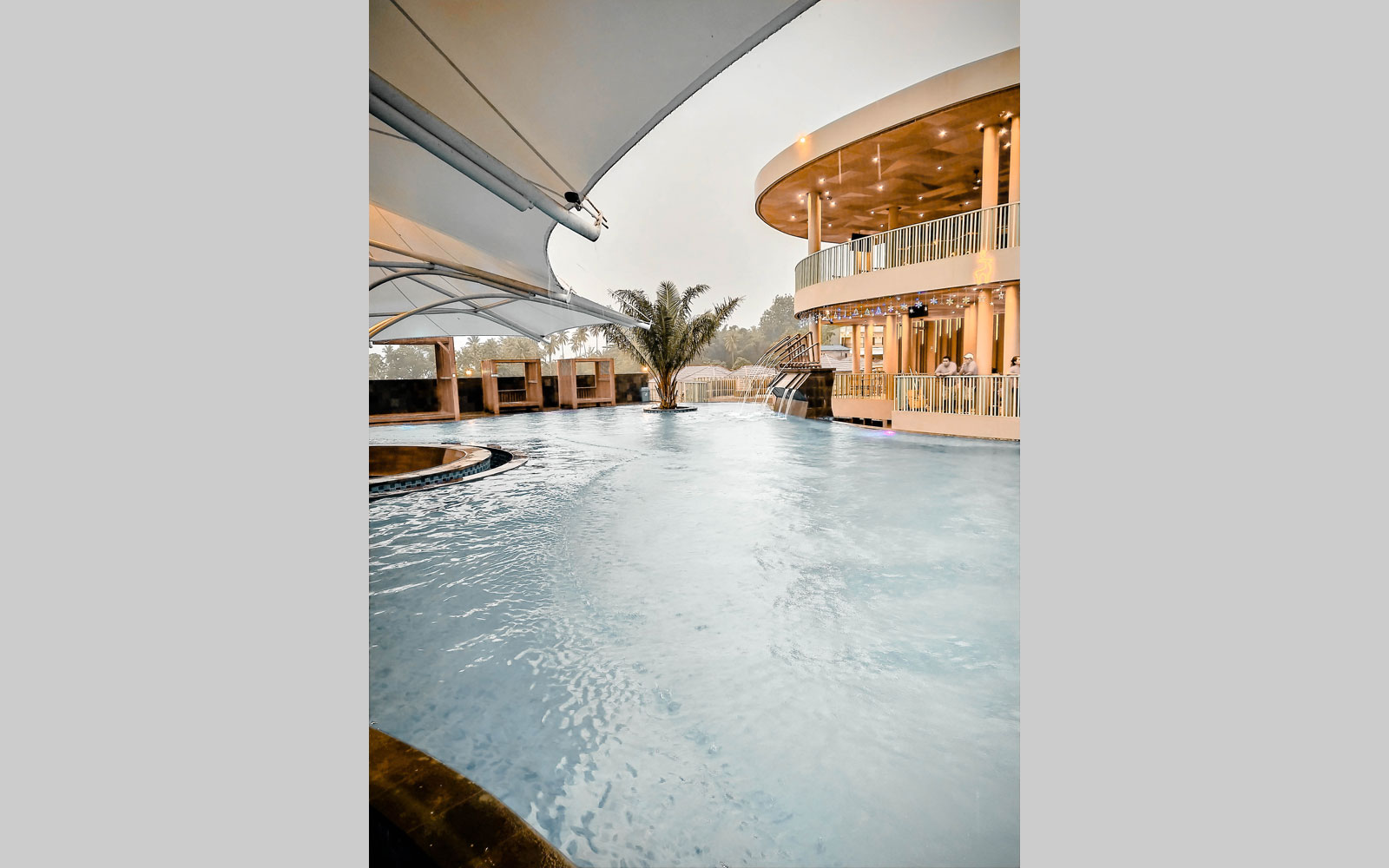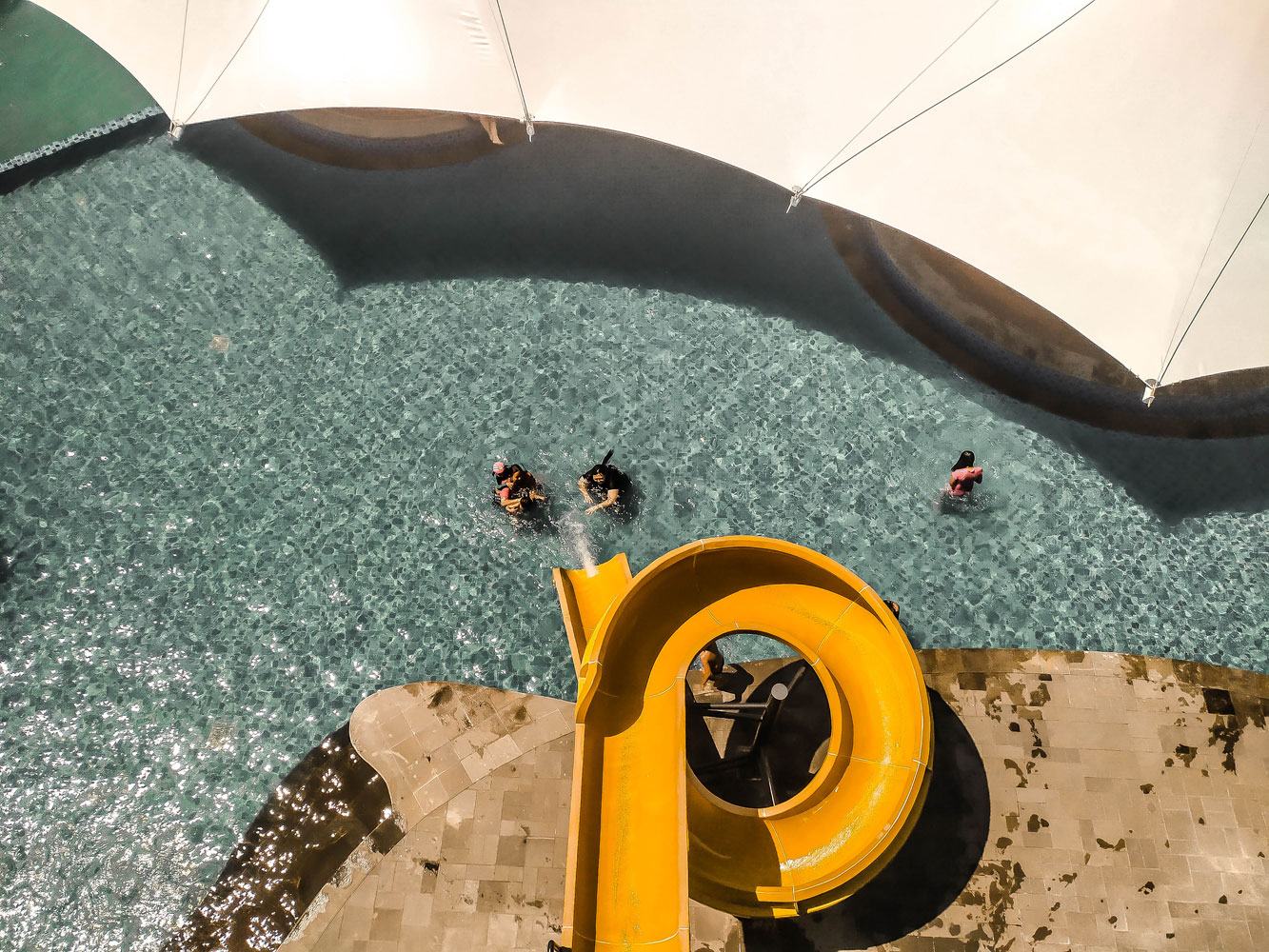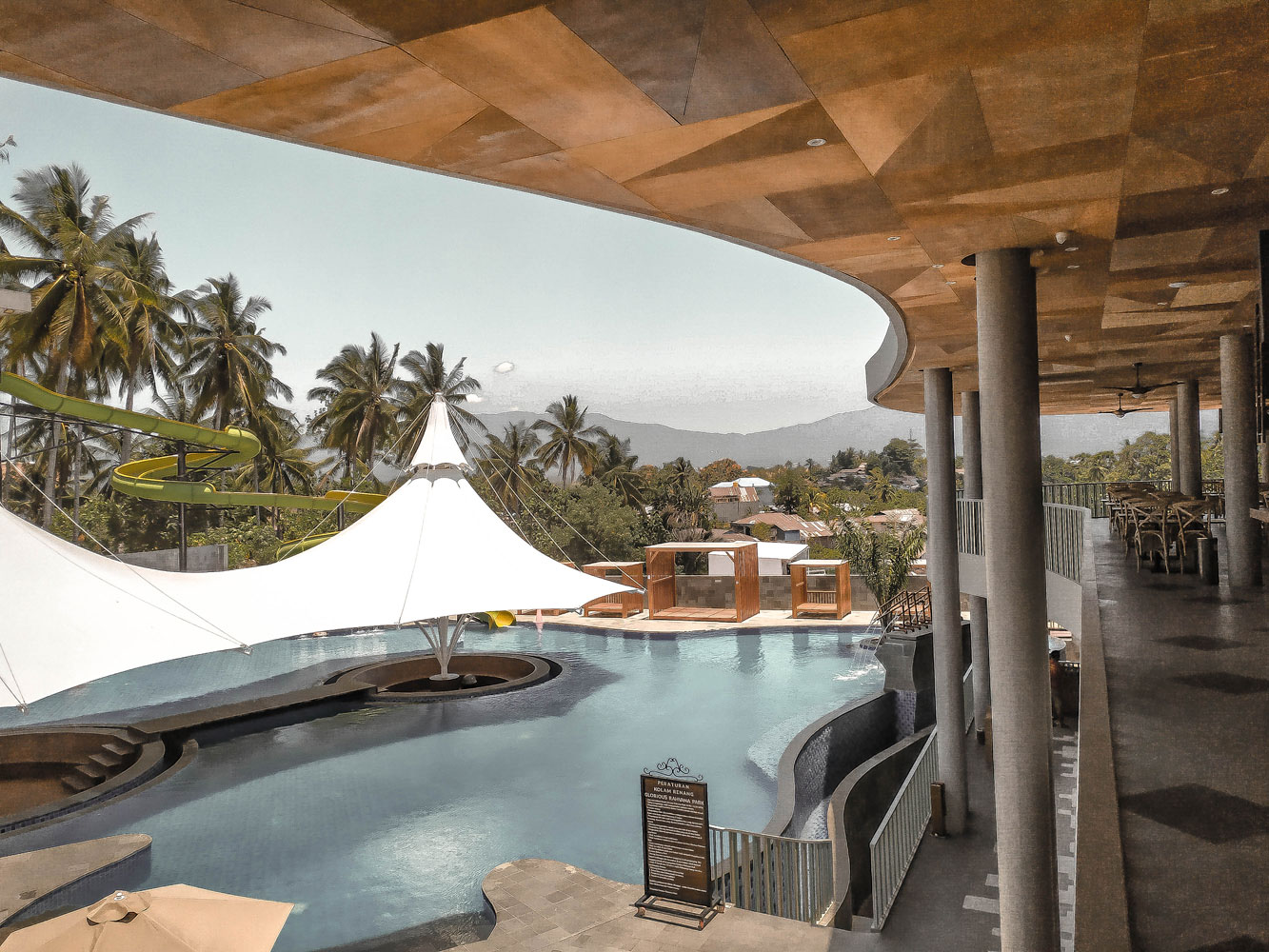
G R P W A T E R P A R K
PURPOSE :
WATER PARK AND RESTAURANT
|
AREA :
3,800 SQM
|
LOCATION :
MANADO, NORTH SULAWESI - INDONESIA
|
YEAR :
2017
Water Park originates from the English words "Water" (air) and "Park" (taman), representing a spacious outdoor play and recreation area for both children and adults. Its primary facilities revolve around water, creating an amusement park with attractions such as slides, water fountains, and other water-related recreational features. A Water Park is an entertainment venue showcasing a water play area, complete with play pools, including those for children with kid-friendly attractions (slides and water splash), wave pools, water slides (sliding devices following specific tracks), lazy rivers (flowing river-like pools), and various other amenities. Additionally, a variety of local foods are offered within the water play area to enhance visitors' experiences.
In the city of Manado, the increasing density and daily activities contribute to a sense of monotony among the residents. Seeking a break from routine, people turn to recreational activities to refresh their minds. Exploring tourist destinations becomes an alternative choice to experience a new atmosphere.
The theme of this indoor water park's planning and design is modern natural architecture, combining Modern Futuristic Architecture with a Natural Atmosphere. Futuristic architecture allows freedom in expressing ideas or concepts in an unconventional, creative, and innovative form. The result is dynamic, constantly changing according to preferences and the times. The futuristic concept is primarily reflected in the building's appearance.
In the design layout plan study, the building's layout will be adjusted based on the site's climatology. As the water park is designed to be indoor, lighting and ventilation are crucial to maintain a natural atmosphere. The entrance is located on the front right side of the site with a drop-off area at the Lobby & Management Office building. This structure consists of three floors on the right wing and one floor on the left wing. The building has three floors and one basement, used for service areas, pumps, and the Back Of House. The basement is utilized due to the site's original contour being 6 meters below the road surface. This vertical building design helps save horizontal space and brings the vision to life.
In the city of Manado, the increasing density and daily activities contribute to a sense of monotony among the residents. Seeking a break from routine, people turn to recreational activities to refresh their minds. Exploring tourist destinations becomes an alternative choice to experience a new atmosphere.
The theme of this indoor water park's planning and design is modern natural architecture, combining Modern Futuristic Architecture with a Natural Atmosphere. Futuristic architecture allows freedom in expressing ideas or concepts in an unconventional, creative, and innovative form. The result is dynamic, constantly changing according to preferences and the times. The futuristic concept is primarily reflected in the building's appearance.
In the design layout plan study, the building's layout will be adjusted based on the site's climatology. As the water park is designed to be indoor, lighting and ventilation are crucial to maintain a natural atmosphere. The entrance is located on the front right side of the site with a drop-off area at the Lobby & Management Office building. This structure consists of three floors on the right wing and one floor on the left wing. The building has three floors and one basement, used for service areas, pumps, and the Back Of House. The basement is utilized due to the site's original contour being 6 meters below the road surface. This vertical building design helps save horizontal space and brings the vision to life.





